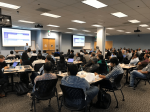You are currently viewing SemiWiki as a guest which gives you limited access to the site. To view blog comments and experience other SemiWiki features you must be a registered member. Registration is fast, simple, and absolutely free so please,
join our community today!
WP_Term Object
(
[term_id] => 14
[name] => Synopsys
[slug] => synopsys
[term_group] => 0
[term_taxonomy_id] => 14
[taxonomy] => category
[description] =>
[parent] => 157
[count] => 750
[filter] => raw
[cat_ID] => 14
[category_count] => 750
[category_description] =>
[cat_name] => Synopsys
[category_nicename] => synopsys
[category_parent] => 157
[is_post] =>
)

WP_Term Object
(
[term_id] => 14
[name] => Synopsys
[slug] => synopsys
[term_group] => 0
[term_taxonomy_id] => 14
[taxonomy] => category
[description] =>
[parent] => 157
[count] => 750
[filter] => raw
[cat_ID] => 14
[category_count] => 750
[category_description] =>
[cat_name] => Synopsys
[category_nicename] => synopsys
[category_parent] => 157
[is_post] =>
)
I’m always curious to learn what might be new in clock domain crossing (CDC) verification, having dabbled in this area in my past. It’s an arcane but important field, the sort of thing that if missed can put you out of business, but otherwise only a limited number of people want to think about it to any depth.
The core issue is something… Read More
Ron Lowman, product marketing manager at Synopsys, recently posted an interesting technical bulletin on the Synopsys website entitled How AI in Edge Computing Drives 5G and the IoT. There’s been a lot of discussion recently about the emerging processing hierarchy of edge devices (think cell phone or self-driving car), cloud… Read More
I’ve always been intrigued by Synopsys’ Certitude technology. It’s a novel approach to the eternal problem of how to get better coverage in verification. For a design of any reasonable complexity, the state-space you would have to cover to exhaustively consider all possible behaviors is vastly larger than you could ever possibly… Read More
Useful Skew in Production Flowsby Tom Dillinger on 12-13-2019 at 6:00 amCategories: EDA, Synopsys
The concept of applying useful clock skew to the design of synchronous systems is not new. To date, the application of this design technique has been somewhat limited, as the related methodologies have been rather ad hoc, to be discussed shortly. More recently, the ability to leverage useful skew has seen a major improvement,… Read More
As a professional semiconductor event attendee I can pretty much tell if an event will be successful by looking at the agenda. What I look for is simple, customer presentations. Not company presentations or partner presentations but actual customer case studies presented by name brand companies. For this event Google, Intel,… Read More
There were many interesting presentations at ARM TechCon this year besides the keynote addresses by Arm, which were truly stunning for content and production value. One very interesting presentation was the talk given in the afternoon of Wednesday, October 9, 2019, titled, Synopsys Fusion Compiler for Next Generation Arm Hercules… Read More
Verifying a design for functional safety requirements for an IP or SoC per ISO 26262 is a complex process that can’t be encapsulated in one tool. Process complexities depend on whether the Tier1 or OEM is targeting safety-levels ASIL-A , B, C or D, where ASIL-D applies to anything truly safety-critical such as airbag controls or … Read More
Building on an old chestnut, if sufficiently advanced technology looks like magic, there are a number of technology users who are increasingly looking like magicians. Of course when it comes to formal, neither is magical, just very clever. The technology continues to advance and so do the users in their application of those methods.… Read More
Bugs are an inescapable reality in any but the most trivial designs and usually trace back to very deterministic causes – a misunderstanding of the intended spec or an incompletely thought-through implementation of some feature, either way leading to reliably reproducible failure under the right circumstances. You run diagnostics,… Read More
This is the third and final blog I have written about the recent AI Hardware Summit held at the Computer History Museum in Mountain View, CA. Day 1 of the conference was more about solutions in the data center, whereas Day 2 was primarily around solutions at the Edge. This presentation from Day 2 was given by Dr. Thomas Anderson, Head,… Read More










